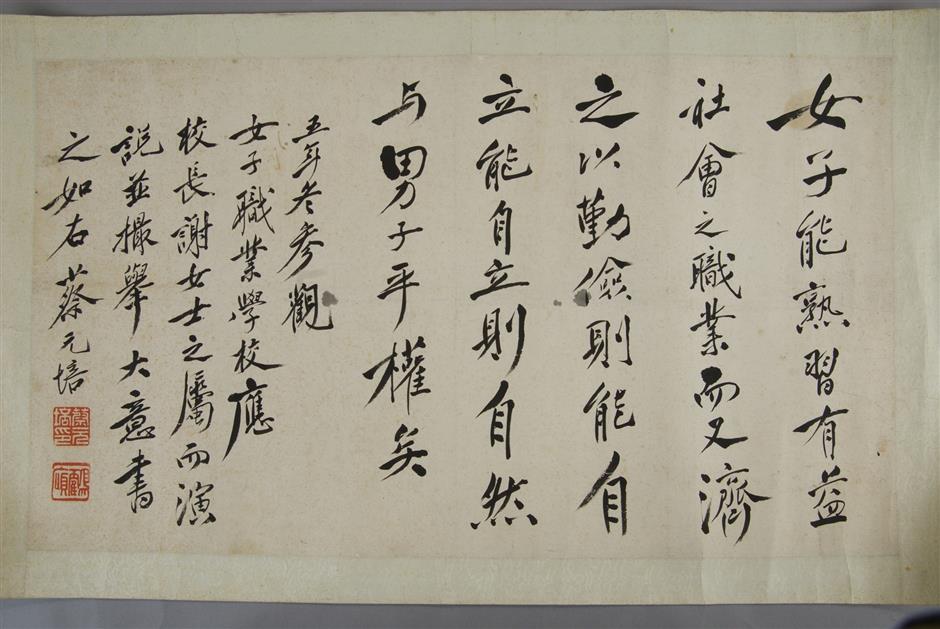May 4th Movement centenary celebrated
To mark the 100th anniversary of the May Fourth Movement, Zhejiang Museum is running an exhibition on the movement which runs through May 12. Archival materials, paintings and multimedia exhibits demonstrate the contributions Zhejiang Province natives made to the historic movement.
The first published edition of the magazine New Youth

Cai Yuanpei’s calligraphic work to encourage women’s vocational training
In 1919, a patriotic campaign swept China, starting in Beijing on May 4 when students took to the street to denounce the Versailles Treaty, which allowed Japan to take over German concessions in Shandong Province after World War I. The anti-imperialist demonstrations also denounced backward values. During the period, Cai Yuanpei and Lu Xun, both born in Zhejiang Province, assembled influential figures in the movement.
Cai was a revolutionary educator in the late 19th century and early 20th century in China. Today, he is called the “father of Peking University,” one of the most prestigious institutions of higher learning on the Chinese mainland. The university was also the epicenter of the movement. At the same time, Cai was dedicated to educating children, women and the masses.
The political movement not only marked an upsurge of Chinese patriotism, but also broke feudal ideas and social practices. Cai called for the introduction of an education system focused on moral education and strongly opposed foot binding and concubinage, which were widely practiced in China at the time.
The exhibition displays Cai’s calligraphic work which encouraged women to participate in vocational trainings to enhance their social status and promote gender equality.
Lu was the “forefather of Chinese modern literature.” He led the literary revolution by writing thought-provoking novels. Lu also popularized modern vernacular literature. Since the May Fourth Movement, this modern vernacular form has been the standard style of Chinese writing.
He produced harsh criticism of social problems in China, particularly in his analysis of the “Chinese national character.” His signature novel, “A Mad Man’s Diary,” was the first and most influential modern work written in vernacular language.

A woodblock print of Lu Xun
Other Zhejiang natives who made great contributions to the movement include Qian Xuantong, Jing Hengyi, Xia Mianzun and Xia Yan.
These intellectuals advocated and debated a wide range of ideas in newspapers and magazines, accelerating the spread of new thoughts.
Among them, the magazine New Youth debated the causes of China’s weakness back then and helped spread the movement across China. Lu was one of its editors. The exhibition displays its first published edition, in which political visionaries heralded a new chapter of history.
Date: Through May 12, closed on Mondays
Venue: Wulin Pavilion of Zhejiang Museum
Address: Zone E, West Lake Cultural Square, 581 Zhongshan Rd N.
Admission: Free
















